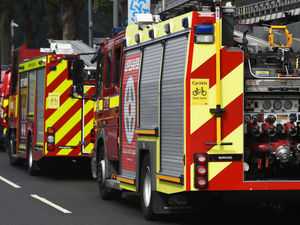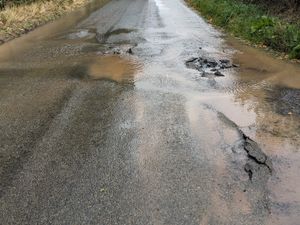Gliding club high fliers get a unique view of Shropshire - with video and pictures
Gliding through the skies over stunning scenery has become the perfect pastime for scores of aviation fans who are part of a unique club in south Shropshire.
Gliders started launching from the west facing ridge of the Long Mynd as early as 1930 and the Midland Gliding Club was officially founded in 1934.
Except for a short cessation of operations during the war the club has operated non stop ever since.
It currently boasts 120 members but is hoping to boost this number by throwing open its doors this week.
Those interested in joining can tour the facilities on Saturday and Sunday, and will have the chance to book a future flight to experience gliding for themselves.
The club, near Church Stretton, has a fleet of seven gliders – all without engines – which use cutting edge aerodynamics.
Gliding has come far from the days of early aviation when pioneers flew gliders made of wood and canvas.
Jon Hall, a former chairman of the club and a member of nearly 30 years, said: “They would bring them up to the top of hills like this.
“They would literally push them off the edge.
“Later on they developed bungee launching, which we still do. Now we use winches here.”
At the club, two winches with a cable running in-between them are used to launch the gliders.
The main winch pulls in the cable, which is attached to the glider using a rope.
It causes the glider to accelerate from nought to 60mph in about 2.5 seconds before launching into a steep climb.
Mr Hall, of Clive, near Wem, said using this method, which also involves the use of a retrieve winch, means the club can launch about 20 gliders an hour if it wishes.
The 67-year-old started gliding when he was 38 and has clocked up 2,300 hours in the air.
Members of the club range in age from 13 to a 90-year-old man who is currently taking lessons.
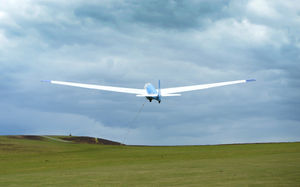
“We encourage members to bring their families along,” Mr Hall said.
“The young children get used to being on an airfield and around aircraft and then they start flying quite young.
“We start flying young people at the age of 12. They can go solo at 14. They can fly a glider before taking a driving test.
“It’s a friendly club. There’s beautiful views and wonderful members.”
Before flying solo, people must pass a series of tests and gain a certificate of competence issued by the British Gliding Association.
To gain altitude, gliding pilots can look for ‘thermals’ which are columns of rising air created by the heating of the Earth’s surface.
Once a thermal is located, pilots will turn back and circle within the column until they reach their desired altitude at which time they will exit and resume their flight.
While wood and canvas may have featured on gliders of the past, designs have developed and they are now made from fibreglass and carbon fibre.
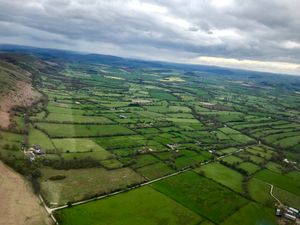
Mr Hall said: “Gliders are the cutting edge of aerodynamics. The maximum speed of most modern gliders is 180mph. Nowadays you can buy a 50-year-old glider with a trailer, parachute and instruments for between £2,000 and £4,000. A brand new one can cost you £250,000.”
Members of the club use gliders to travel all over the country.
Mr Hall said: “It gives people a sense of freedom. People are always fascinated by birds and we fly like birds do.
“We are using natural energy so it’s very green.
“The whole point of gliding is to go somewhere.
“It’s not unusual to go 500km to 600km in a single flight. On really good days you can go to the Isle of Wight and back.”
The club has 20 gliding instructors, including Charles Carter, of Condover.
The 72-year-old has 1,400 hours of gliding experience and started in 1984.
He said: “It’s an exhilarating sport. You never stop learning. It’s a constant challenge. No two flights are ever the same.
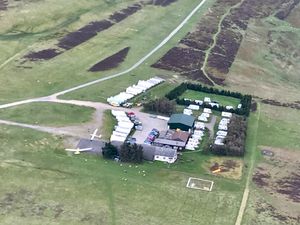
“One of the great joys of gliding is the sky is a power house of energy.
“A glider pilot needs to learn how to harness it.”
The club operates all year round and offers wave, thermal and ridge soaring for novice and experienced pilots.
It runs glider pilot training courses throughout the summer and offers first flight experiences.
On its extensive airfield of about 134 hectares, there is a hangar, workshops, a clubhouse which also offers overnight accommodation, as well as caravan parking and a camp site.
Members pay a fixed annual flying fee that entitles them to fly any club glider as much as they like, subject to aircraft being fairly shared between other club and course members, with no additional hourly charges other than a launch fee.
There are also opportunities to get involved in competitions.
The club’s open event is running until Sunday and tours are available in the daytime and evenings.
It runs open events on the second Saturday of each month.
For more information visit midlandgliding.club or call 01588 650206.
Shropshire Star reporter Lisa O’Brien gives gliding a go
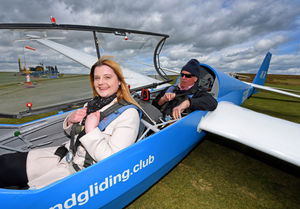
After being fitted with a parachute, I nervously climbed into the cockpit of an ASK13 two-seater training glider.
Sat in the front seat, my gliding pilot Charles Carter pointed out the controls and instruments which would measure the speed and altitude of the glider, as well as its rate of climb or descent, while we were in the air.
Charles, who I was assured has 1,400 hours of gliding experience, climbed in the back. After pre-flight checks were carried out and the canopy was closed we were braced to take flight.
The main winch started to pull in the cable, which was connected to the glider by a rope, and I tightly held onto my shoulder straps for the launch.
I’d been told to expect a fast acceleration and as the glider went from being stationary to 60mph in just over two seconds a mixture of thrill and terror took over.
We were soon in a sharp climb before it suddenly went calm – all in a matter of seconds.
It felt surreal being in an aircraft which was gliding through the air without an engine.
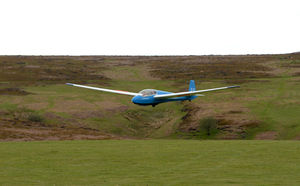
As we glided along, Charles explained he was looking for ‘thermals’ which are columns of rising air created by the heating of the Earth’s surface.
Every time we reached one he would make the glider turn to increase our altitude.
The highest we reached was about 2,600ft above sea level and I was able to see for miles across the stunning countryside.
The flight was smooth but involved a lot of turning and after about 25 minutes I started to feel a little queasy.
Charles decided to land and we were back safely on the ground in a matter of minutes, with a smooth landing.
I could tell it involved a lot of skill and patience and it is easy to see why people find it such an enjoyable pastime and sport – well worth a try.

